Game-Changers: we pick our top 20 creative world-rockers
In 20 remarkable years we have come across, written about, examined and exhumed a lot of remarkable people. On the following profiles are 20 of them. This, though, is not a simple ranking of power and influence. These are stories that resonate, with which we find common purpose and cause. Here are people who have sometimes stuck bloody-mindedly to a course, sometimes pivoted, re-examined and pushed in new directions, who have defied expectations and even open derision. They have shown courage under fire and grace under pressure. They have transformed – from girl group popette to one of the fashion industry's smartest operators, for instance – and, over the last 20 years, have had a transformative influence in their field. Here are architects who build with a sense of the immaterial, artists who want to talk to everyone, experimentalists and food engineers, fashion designers who defy fashion and bob and weave like prize fighters, tech titans who have changed the way we do almost everything. One reinvented the hotel industry, another presents it with an existential threat. There is also a man who wants to save the world – or take us all to Mars if that doesn't work out. Either way, we'll be along for the ride.
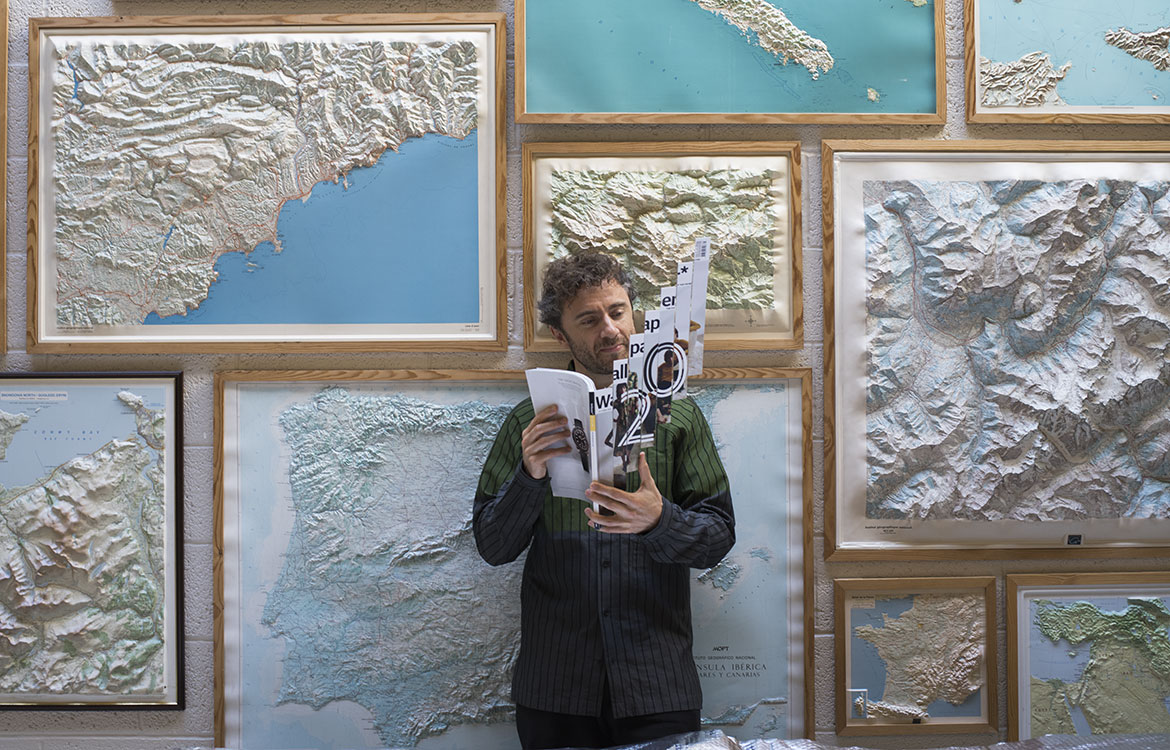
Some of the largest architecture projects in the world are taking shape in a ground-floor atelier tucked away in London’s King’s Cross. Thomas Heatherwick set up his studio in 1994 after studying at Manchester Polytechnic and the RCA, and over the years he gradually scaled up its output, creating everything from furniture and installations through to buses, bridges, art museums and whole city blocks. Heatherwick now works alongside around 200 designers, 130 of whom have architectural training. The studio output is focused on big buildings. These include one of the largest mixed-use projects in China, a key component of a vast US private development, a California office for a tech colossus, and a new bridge for London, all of which are at various stages of planning and construction.
Despite this mega-structural ambition, every Heatherwick project can be infinitely zoomed into, right down to the smallest design component. This combination of scale and detail comes out of an absolute commitment to process, something that becomes evident the minute you sit down with Heatherwick to talk about his work... Read the interview in full here
In 20 remarkable years we have come across, written about, examined and exhumed a lot of remarkable people. On the following pages are 20 of them. This, though, is not a simple ranking of power and influence. These are stories that resonate, with which we find common purpose and cause.
Here are people who have sometimes stuck bloody-mindedly to a course, sometimes pivoted, re-examined and pushed in new directions, who have defied expectations and even open derision. They have shown courage under fire and grace under pressure.
They have transformed – from girl group popette to one of the fashion industry's smartest operators, for instance – and, over the last 20 years, have had a transformative influence in their field. Here are architects who build with a sense of the immaterial, artists who want to talk to everyone, experimentalists and food engineers, fashion designers who defy fashion and bob and weave like prize fighters, tech titans who have changed the way we do almost everything. One reinvented the hotel industry, another presents it with an existential threat. There is also a man who wants to save the world – or take us all to Mars if that doesn't work out. Either way, we'll be along for the ride.
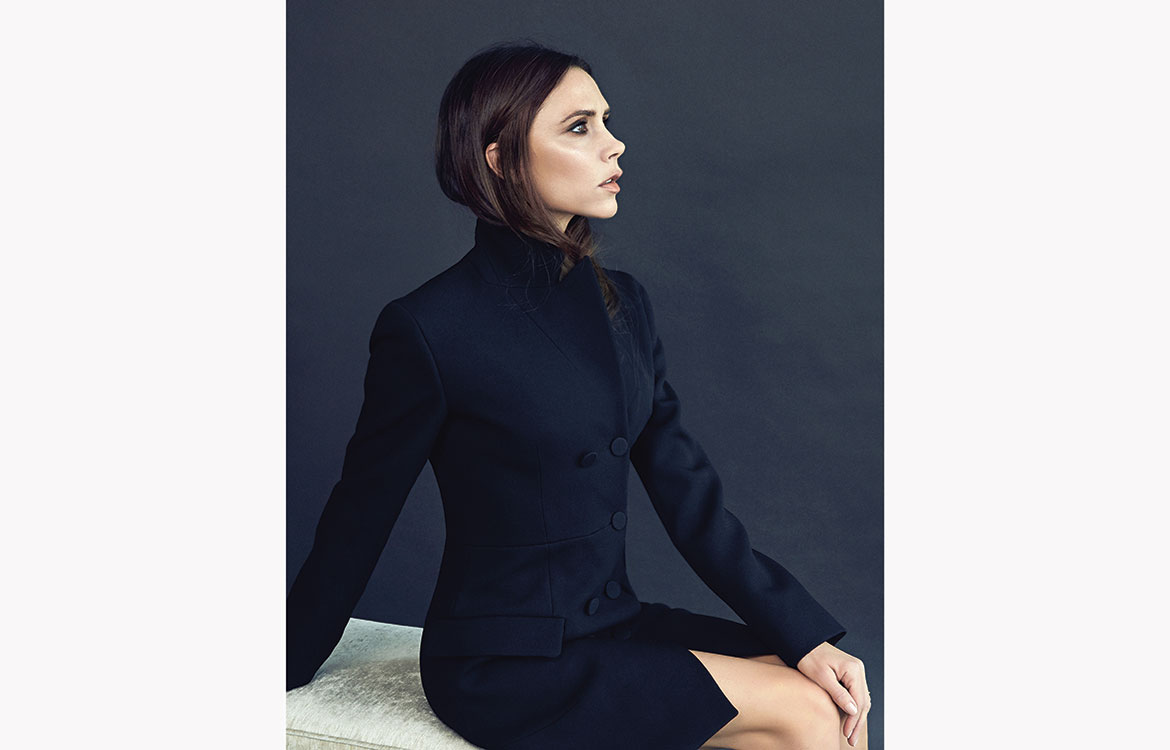
Victoria Beckham’s transformation from pop celebrity and tabloid icon to the force behind a covetable fashion line is an extraordinary one. Indeed, when the Spice Girls burst onto the cultural landscape in 1996, it would have seemed unlikely that 20 years later she would be presiding over a label now fêted for its sleek, restrained lines.
But to hear Victoria Beckham tell it, she didn’t have ‘any grand expectations’ when making the transition from music to fashion. ‘I was just focused on creating clothes that I felt proud of and passionate about,’ says Beckham of launching her eponymous line in 2008. ‘The fact that the brand has since taken off in the way it has has been very humbling.’
Now, the label boasts its own handsome flagship store on London’s Dover Street, counts Net-A-Porter, Liberty and Barneys among its many stockists, and recorded a turnover of £34m in 2014.
But the signals that Beckham had an affinity for design were there at the start. She was the stylish Spice Girl who stood out amid her flashier bandmates. As her and her husband David’s fame grew, they embraced their roles as fashion plates with a mutual fondness for Gucci and Versace... Read the interview in full here
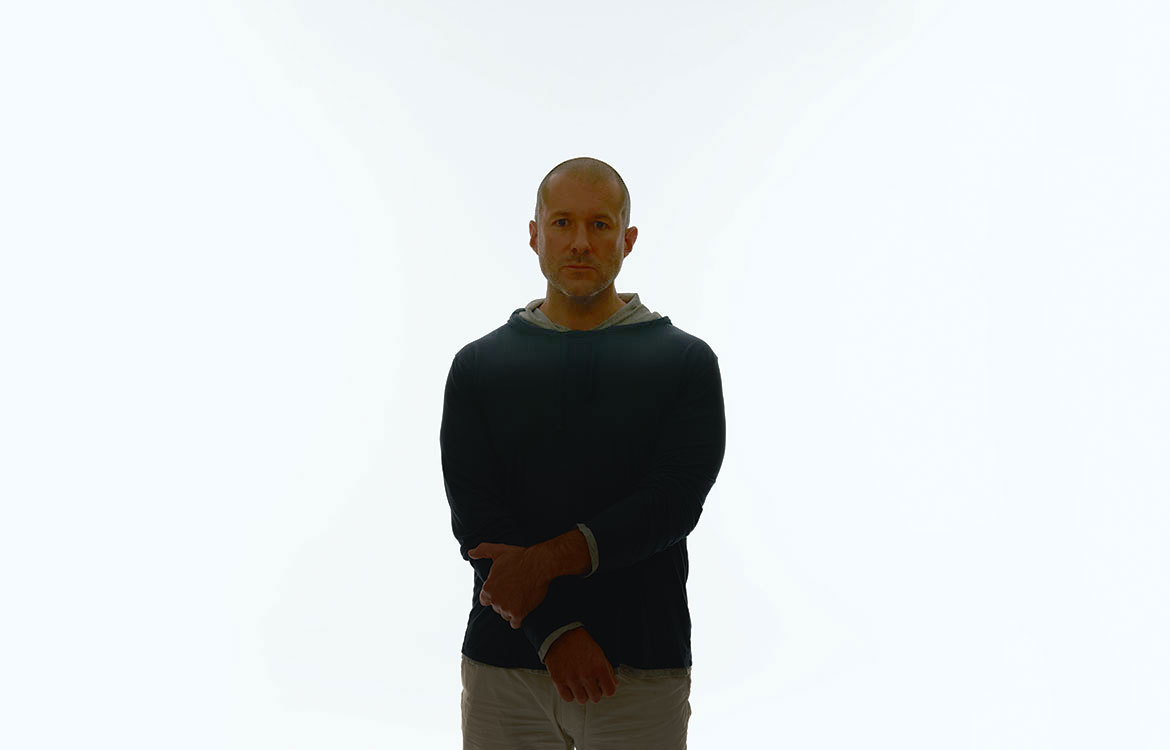
The year Wallpaper* launched, a 28-year-old Jonathan Ive was appointed as Apple’s design director. ‘Our goal is figuring out how we can bring meaning to objects,’ he told us a year later. He ticked that box. ‘Think of Apple as a product company whose primary goal is to make the very best products we can,’ he told us back in 2010. But six years is a long time in technology, and services, software, apps and interaction arguably play a far greater role in how we use our devices today. The intuitive elegance that has marked Ive’s designs is now harder to achieve...
The year Wallpaper* launched, a 28-year-old Jonathan Ive was appointed as Apple’s design director. ‘Our goal is figuring out how we can bring meaning to objects,’ he told us a year later. He ticked that box. ‘Think of Apple as a product company whose primary goal is to make the very best products we can,’ he told us back in 2010. But six years is a long time in technology, and services, software, apps and interaction arguably play a far greater role in how we use our devices today. The intuitive elegance that has marked Ive’s designs is now harder to achieve.
Hard but not impossible. ‘Far from being mutually exclusive, technology and craft are not at odds,’ he says. Apple knows this like no other, and that’s largely down to Ive’s status as a titan of exceptional user design. ‘Much like beauty and utility,’ he says, ‘[technology and craft are] all the more powerful in combination.’ Ive and Apple are another such supercharged blend
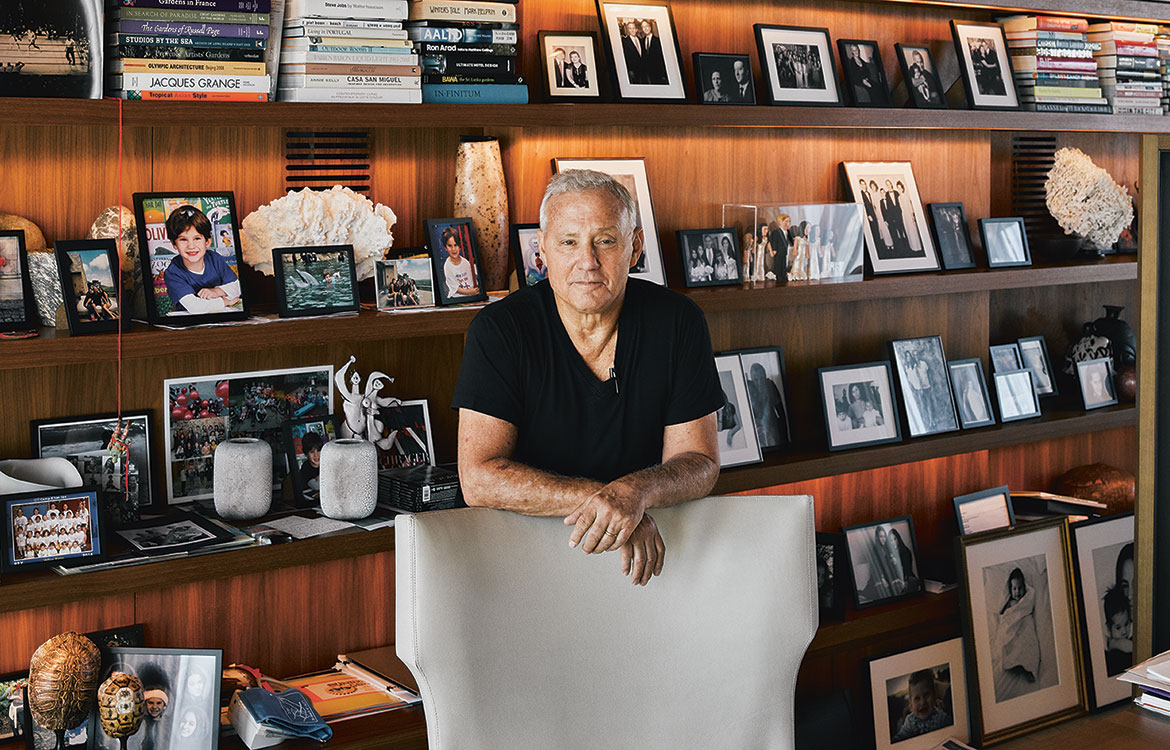
Most people steal things from hotels. Few try to steal an entire hotel. But that’s what happened to Ian Schrager. Just weeks after he opened the Edition in Waikiki, the owner of the building turned up in the middle of the night, changed the locks on the front doors and told the staff they worked for him now, not Schrager’s company. The episode neatly, if rather dramatically, sums up the man who has transformed hotels.
Over the past 30 years, Schrager has reinvented hotels and then reinvented them some more, and each time he has done so, his rivals, big and small, have stolen his ideas wholesale. At Morgans, the Royalton, the Paramount and the Hudson in New York and, along the way, the Delano in Miami, the Clift in San Francisco, the Mondrian in LA, and St Martin’s Lane and the Sanderson in London, he created the boutique hotel. It got the name not because it was small, but because it was curated with a strong attitude and aesthetic, like a fashion boutique.
The key ingredients are the lobby scene, the go-to bar, the must-book restaurant for guests and locals alike, the signature scents, the hot staff with clothes more expensive than the guests’, the cool nightclub, the sense of an urban resort, the CD collection and the baffling taps in the bathrooms. There’s scarcely a hotel on the planet whose design or service has not borrowed some or all of these elements. ‘They pickpocket my ideas,’ Schrager says. ‘I still get annoyed by it, especially when I see things that we laboured and agonised over that have now become standard. The bed with the low headboard with the light behind, it’s everywhere...’ Read the interview in full here
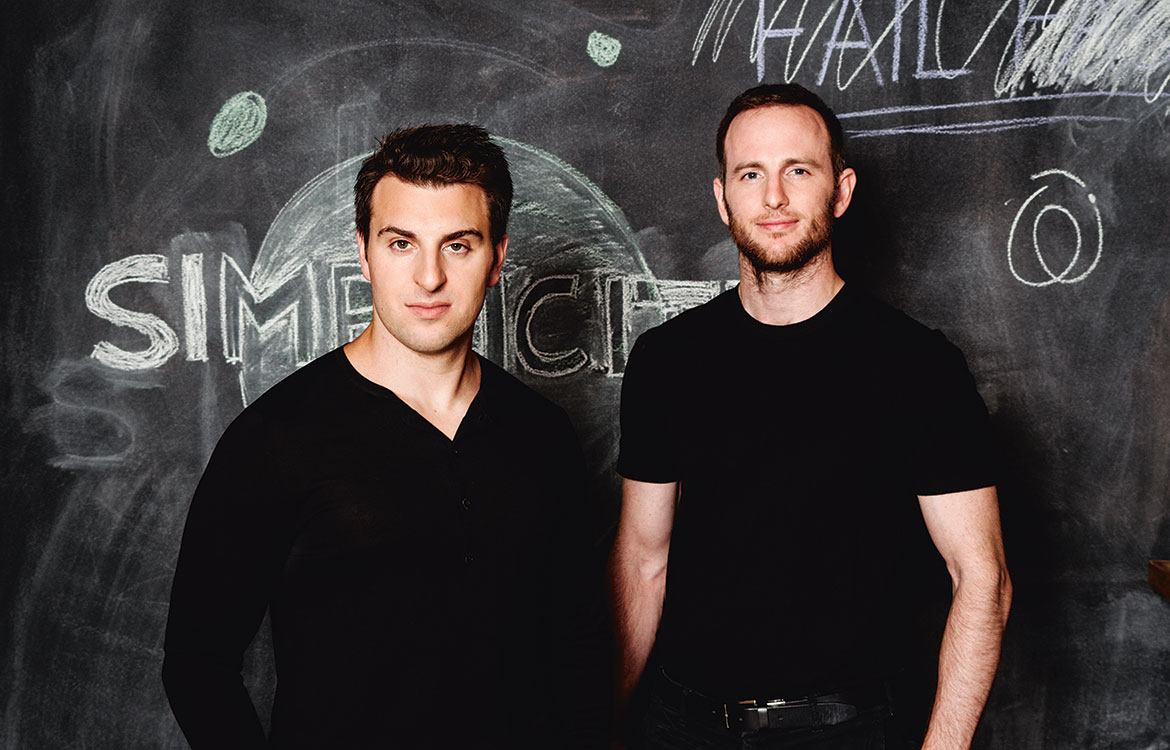
Airbnb confounds for many reasons, though the most obvious one is that its success is based on a business model that ignores one of the first lessons we learn at our mother’s knee: don’t talk to strangers. We can only imagine what the first few investor meetings in 2008 must have been like.
And yet, fast forward nine years and the website – essentially a match-making service between home-owners and visitors looking for an alternative to hotel rooms – has already hosted 123 million nights. It’s also in the midst of seeking additional funding, valuing the company at $30bn – making it the second highest-valued start-up in the US behind Uber.
And like Uber, Airbnb has become a poster-child for the sharing economy, that nebulous but extremely valuable intersection between commerce and human connection. It has recast the idea of privacy, security and personal space. And all because Joe Gebbia and Brian Chesky, two graduates from the Rhode Island School of Design, found a way to take the components of trust between people who had never met, and design for it. ‘We didn’t come up with anything new,’ says Gebbia, now chief product officer. ‘There were many websites like ours. Why did ours take off? Luck and timing played a part. The 2008 recession led people to consider new ways of earning supplemental income. But I believe the key difference was design...’ Read the interview in full here
Wallpaper* Newsletter
Receive our daily digest of inspiration, escapism and design stories from around the world direct to your inbox.
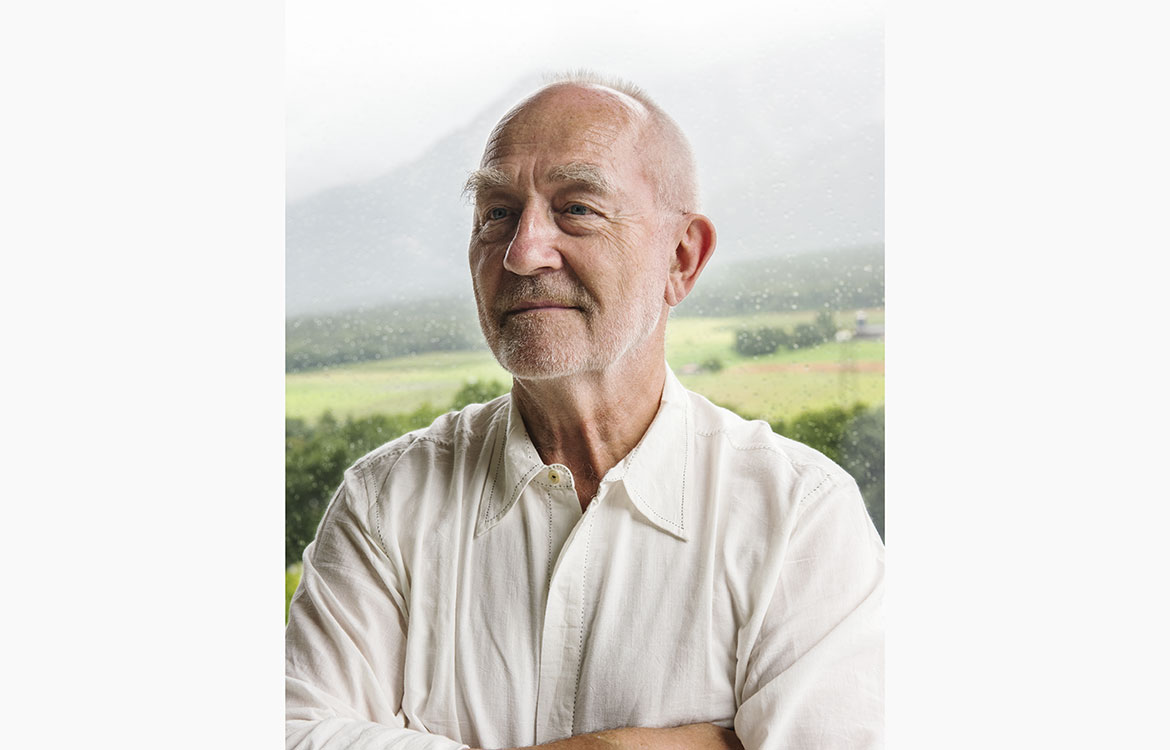
Therme Vals was completed in 1996, the same year this magazine was founded. It was clearly a good year. Two decades on, Peter Zumthor’s genre-defining spa in the Swiss canton of Graubünden remains a place of pilgrimage for architecture enthusiasts the world over. And Zumthor is now one of the world’s most sought-after architects.
Zumthor is not your typical internationally-operating, Pritzker Prize-winning architect, even if there is such a thing. He has no offices in London, New York or Zurich, preferring instead to base himself in the tiny Swiss hamlet of Haldenstein, where he has lived and worked for more than 40 years. At his atelier, staff are not found glued to shiny Apple Macs but gathered around physical models of buildings – working prototypes lifted up on stilts to eye level – while beyond those models, breathtaking wraparound views stretch out across the Grisonian Rhine Valley. The practice is small, deliberately limited to around 30 people, making it a necessity to be very choosy about the projects it takes on. Which is what makes it really different.
Looking back over the last 20 years since Therme, the projects Zumthor has designed have been dictated not by commercial opportunity, but by where architecture can make a real difference to the human experience. Where architecture can bring joy, peace, insight or energy. You know you’re in a Zumthor building not because you notice any trademark shapes or materials, but because of how it makes you feel... Read the interview in full here
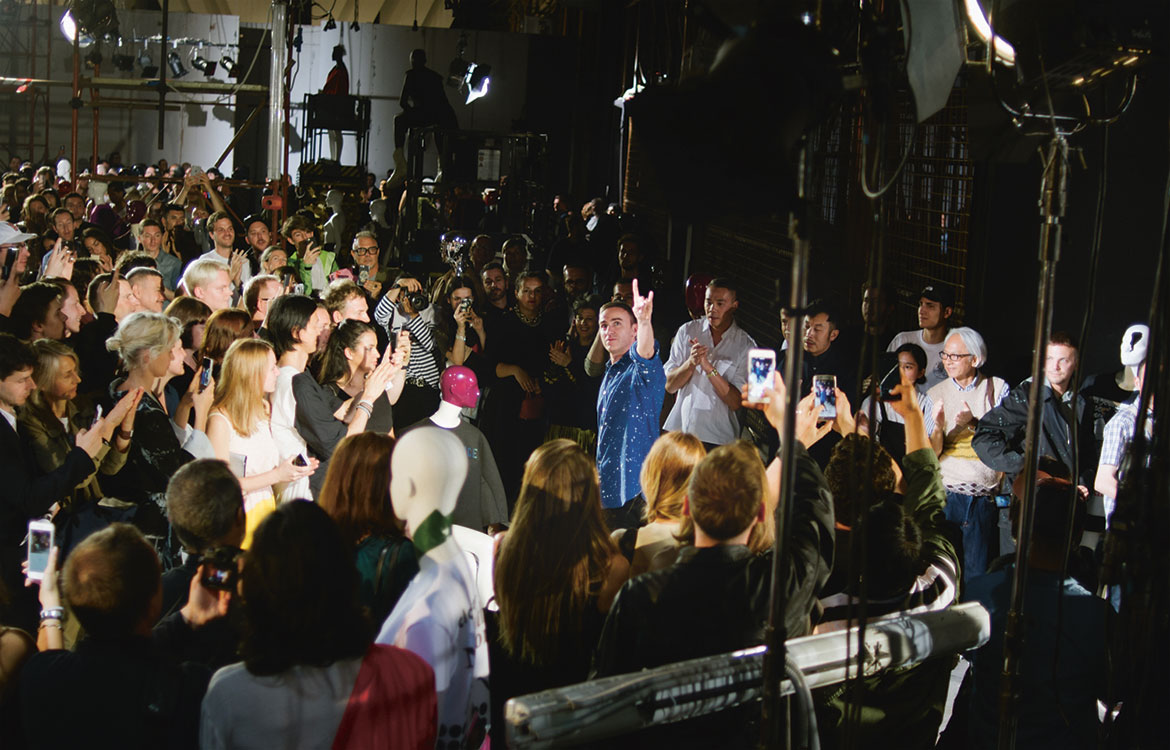
It is now the norm for fashion designers to dabble in other forms. Hedi Slimane, Rick Owens, Karl Lagerfeld and JW Anderson are all serious, serial dabblers. This is the age of the new polymath, the cross-disciplinary curator, the imperial taste-maker. But there is one designer who has gone much further; who, over the last 20 years, has relocated fashion, pulled it out of its self-referential loops and plugged it into a larger, more powerful network of ideas and influences.
Raf Simons originally trained in industrial and furniture design in Genk, Belgium – the country where he was born and raised and where his eponymous menswear line is based. After interning with Walter Van Beirendonck and then watching a Martin Margiela show in Paris, which Simons has described as nothing short of a revelation, he turned instead to fashion. He founded his own label in 1995.
That unconventional start explains Simons’ mould-breaking approach to designing clothing. ‘I always wanted to find other ways, explore other ways,’ he says. Focusing on menswear, Simons has subtly and insistently proposed new ways of dressing men. His radicalism has not only affected the way entire generations of men dress, but how generations of fashion designers create their clothes. The designs of youthful labels like Hood By Air or Off-White are tied up with ideas Simons has explored over the past 20 years... Read the interview in full here
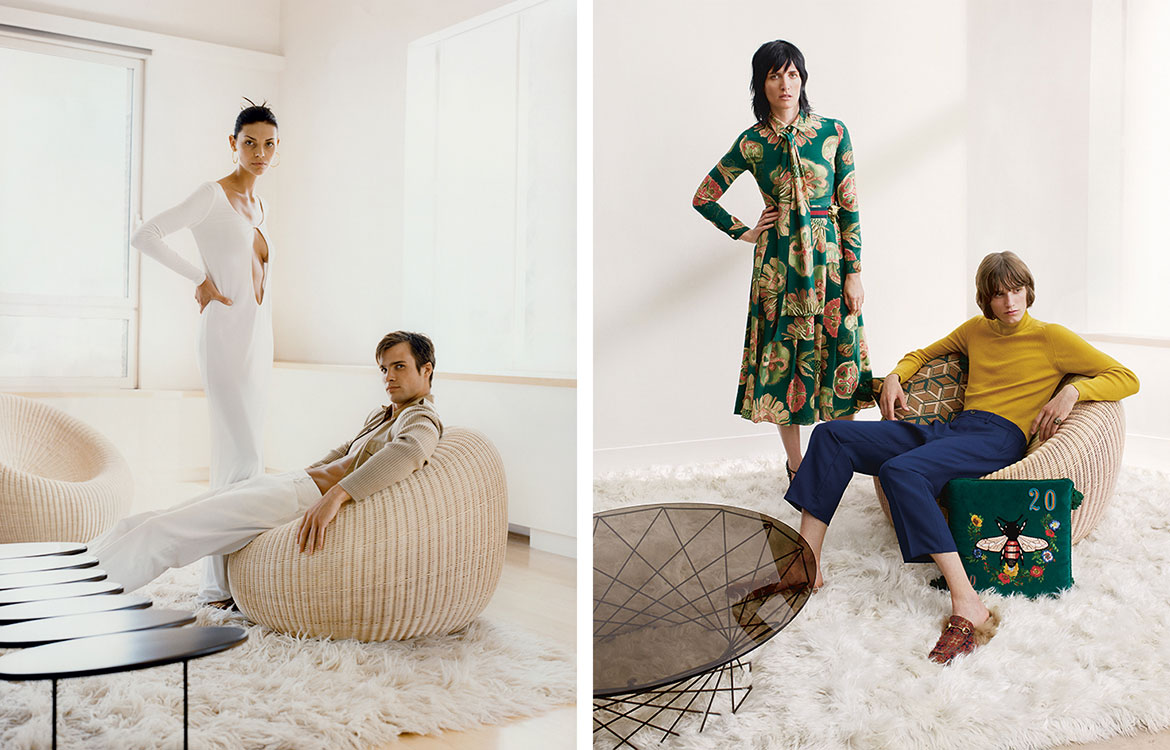
Alessandro Michele’s Gucci is a harbinger of change in the fashion industry. In barely 18 months, his work has perceptibly moved goalposts and his impact is hard to overstate, certainly when it comes to recent fashion. Indeed, you’d have to dive back to the 1990s to find anything similar. Ironically, if you do so, you’ll find it was once again at Gucci that the status quo shifted, under the tenure of Tom Ford. Exactly 20 years apart, both used the Italian leather goods behemoth to ring in the changes, to provoke, challenge and ultimately seduce. Both have proved, within the space of mere seasons, to be the dominant fashion stories of their respective periods.
Michele and Ford’s visions for Gucci, on the surface, are polar opposites. Indeed, Michele’s obsession is with elaborating his surfaces, in homage to the Italiano eccentrico styles commonly associated with designers like Walter Albini, the interwar couturier Elsa Schiaparelli or the Milanese fashion editor Anna Piaggi. It stands in stark contrast to Ford’s midcentury modern-tinged minimalism, the sartorial equivalent of an Eames lounger, of lean tailoring and jersey evening dresses with insets of metal. Slick was the word most often used to describe Ford’s vision for Gucci, from the shiny polished catwalks of his biannual shows through to the glistening double-G insignias dripping from bags and belts. There’s nothing slick about what Michele does – it’s more sick, a mix of oddball references and strange proportions that have some beauty to them, to hamfistedly paraphrase Sir Francis Bacon... Read the interview in full here
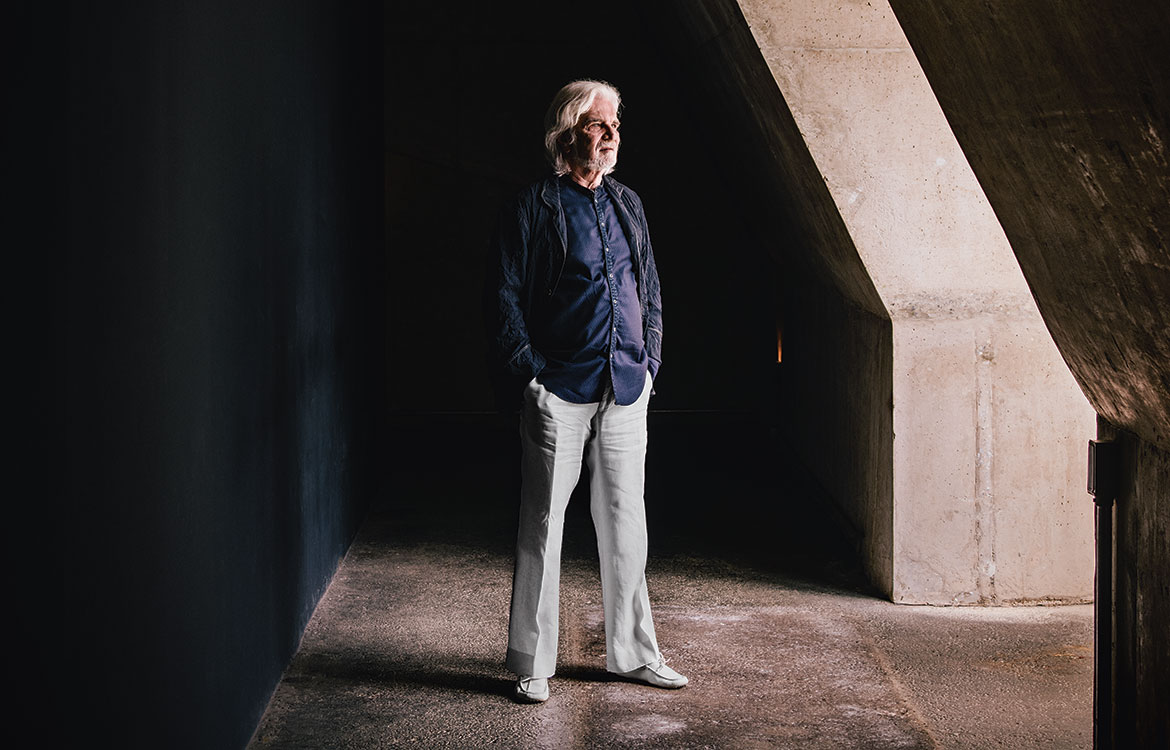
Towering above his employees and most of his guests, with flowing locks and a beard as white as his linen trousers and moccasins, Brazilian mining magnate and modern-day Medici Bernardo Paz looks a little like God as he goes about his mission of building heaven on earth.
In Paz’s contemporary garden of Eden, Inhotim, every detail has been designed to reset the way visitors live their lives. The sprawling utopia, an hour from his home town of Belo Horizonte and designed as a perfect marriage of art, nature and architecture, is much more than a playground for an eccentric millionaire. It’s Paz’s gift to the world – a beautiful, peaceful place from a man whose name means peace. Mines, as the inhabitants of Paz’s home state of Minas Gerais know only too well, are a finite resource, and the Mineiros, as the locals are known, have seen their riches shipped off to the world for nearly two centuries – with all too little to show for it.
Paz has turned the concept of one-off extraction on its head, using the wealth accumulated from gouging iron ore from the mountains that surround Belo Horizonte to plant the seeds of a contemporary crop, one he believes will bear fruit ‘for a thousand years’. The profits – more than $250m – generated from shipping three million tonnes of iron ore a year to mills in Brazil and China, are ploughed into his dream.
‘I want to create a state of mind,’ he says. ‘The hardest thing is to change the way people see the world, but beauty changes people’s lives...’ Read the interview in full here

By the early 1990s, Kazuyo Sejima already had experience at Toyo Ito’s office, her own studio and a Young Architect of the Year award from the Japan Institute of Architects under her belt. But it was after setting up SANAA (with Ryue Nishizawa) in 1995 that her career really took off, upscaling to major cultural commissions which transformed her into an international go-to choice for mesmerisingly barely-there, ethereal architecture.
Her signature style of strong shapes and clean lines that at the same time appear flowing and delicate has helped define 21st-century Japanese architecture. It is all about the experience for Sejima, although priorities have shifted somewhat since her early days in practice. ‘Our designs are not driven by what you can do with architecture itself, but by an interest in the way people experience space as a relationship between programme, city and surrounding landscape,’ she says. ‘In the past, I would try to understand the overall character of a building’s environment and use this abstract idea to develop a design. Today, I try to create spaces that are more precisely adapted to the variable character of a neighbourhood...’ Read the interview in full here
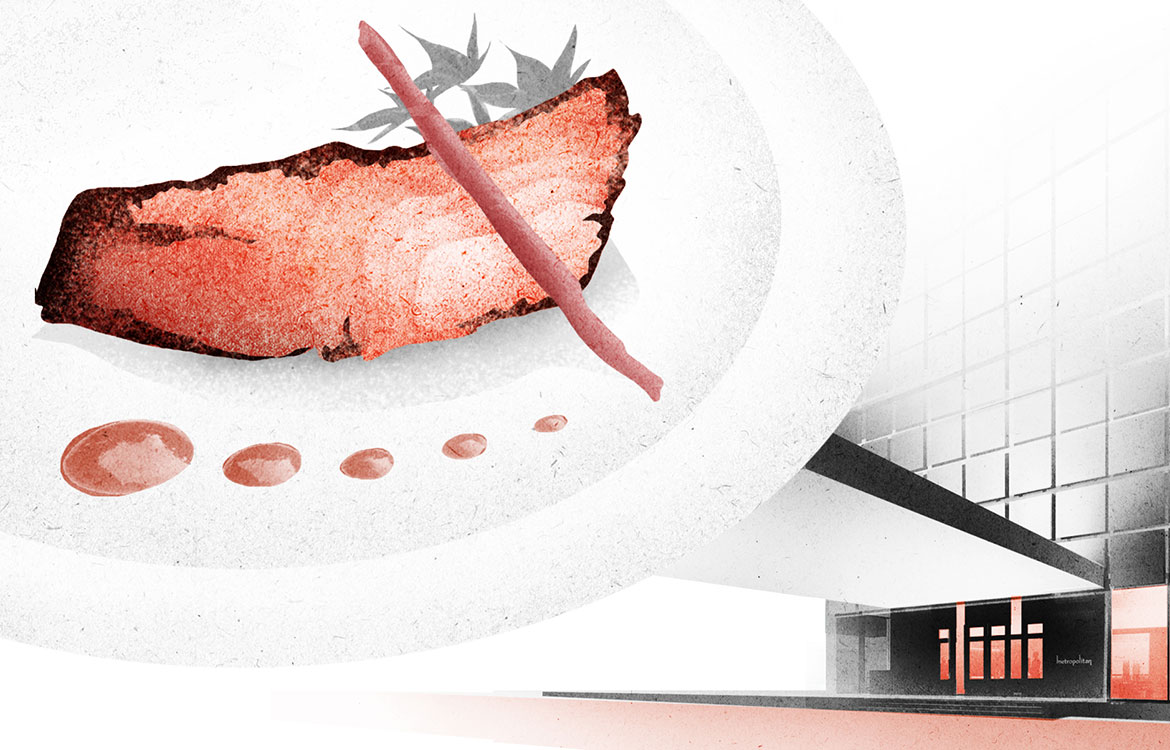
There was a time when Japanese food meant exactly the same thing wherever you were, whatever the occasion and budget: sashimi, teppanyaki, sushi, teriyaki and tempura. In the 1990s, however, Nobuyuki Matsuhisa changed all that when he launched his deliriously inventive spin on classic Japanese tropes layered with nuanced South American influences, Peruvian specifically – yellowtail sashimi jalapeño and tempura eel, for instance.
From the start, a strong stylish streak has run through all of Matsuhisa’s projects. When the first Nobu opened in New York in 1994, he tapped David Rockwell for the interiors. ‘I explained to David the importance of the flow of the kitchen and the connection between the kitchen and the sushi bar. He understood both what I wanted and my style of cooking, and was able to translate my vision into a beautiful restaurant.’
It’s a formula that Matsuhisa has repeated over the years with great success. Within a few months of the first issue of Wallpaper*, he partnered with Robert De Niro, restaurateur Drew Nieporent, and Singaporean hotelier Christina Ong to open his first European outpost in London’s Metropolitan Hotel. Nobu London was the proverbial instant success. Every night, the deliberately austere dining room was mobbed by the city’s beau monde – every table swooning over the celebrated (and much imitated) black cod and miso. Within a year, it owned a Michelin star... Read the interview in full here
Illustration: Eoin Ryan
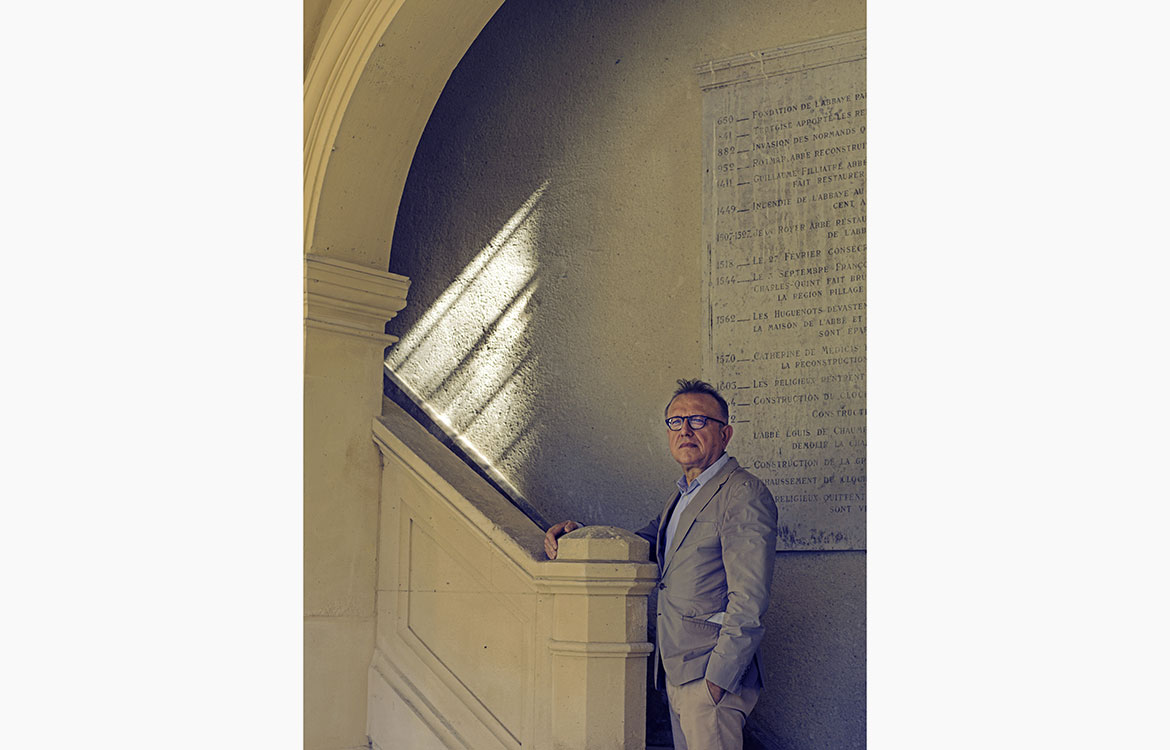
To paraphrase Sinatra, 1996 was a very good year. Wallpaper* was launched, Richard Geoffroy was promoted to chef de cave at Dom Pérignon and, very appropriately, that year produced an extraordinary vintage that, two decades on, is still talked about. ‘Normally, the great wines come from the fine sunny weather. It was the wind that year,’ Geoffroy explains. ‘It drove the dehydration of the grapes and concentrated the juices to produce something baffling, energised, constrained and infinitely youthful.’
On paper, Geoffroy’s credentials are impressive enough – born into a champagne-making family, he is a trained medical doctor and an influential oenologist. In person, he is articulate, smart, jovial, disciplined and passionate about the art of winemaking.
His extraordinary niceness makes it easy to overlook the fact that Geoffroy is an industry powerhouse. He says his relationship with Dom Pérignon is so intimate a line cannot be drawn. ‘We share the same sense of playfulness, completeness, complexity and serenity. Our fundamental core is one of harmony, which is expressed in the tension between winemaking and blending. But we are not flash or ego-driven...' Read the interview in full here
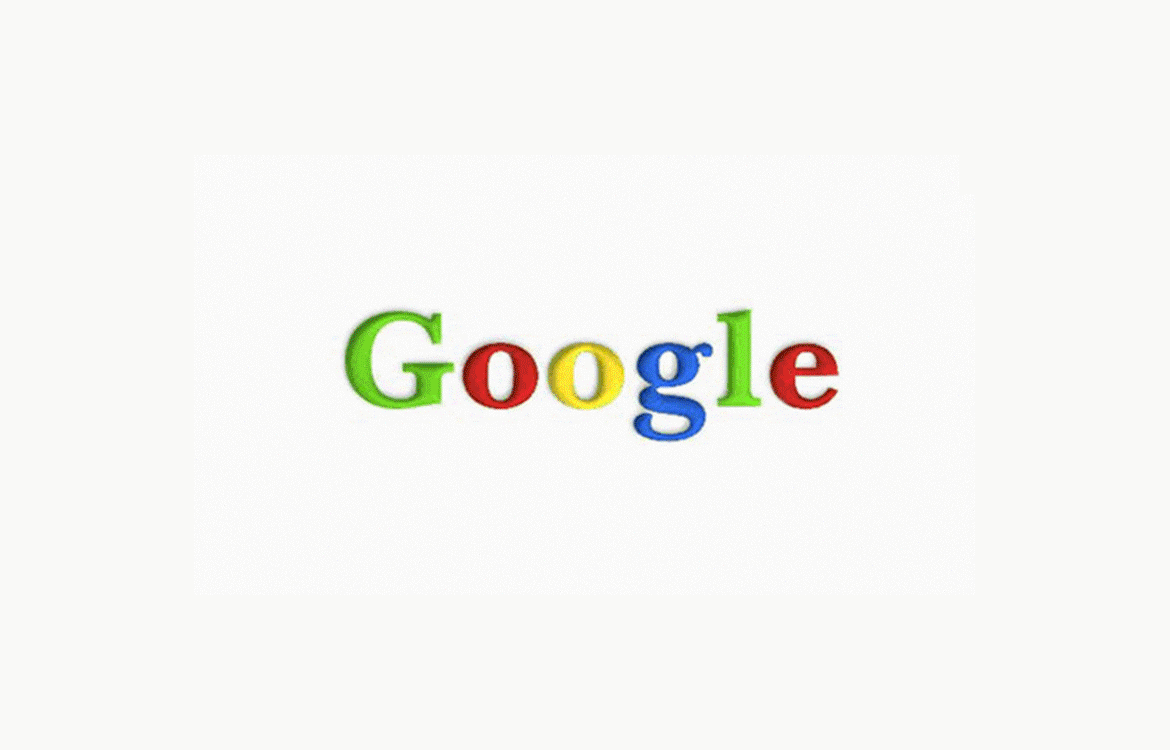
Pictured: the many faces of Google through the years...
Co-founder of Google with Sergey Brin, CEO of Alphabet and the man behind Mountain View’s ongoing and relentless diversification into every single stratum of our tech-centric lives, Larry Page can lay claim to some serious data. Google is, of course, named for a number – a very big number – so it’s appropriate that any stats culled from the company’s day-to-day operations are suitably mind-boggling. Here are the facts and figures that prove Page will influence our intelligence for decades to come. The man behind the world’s biggest tech influencer conjures up serious stats. See them here...

It’s not a coincidence that, as Hussein Chalayan was presenting his first collections, the first issue of Wallpaper* was also taking shape in London. The designer has been vocal about the impact the magazine and the city had on him from the start. ‘For me, Wallpaper* was where all the different disciplines and facets of lifestyle merged,’ he says. ‘It was a publication that really gelled that together. My interests already included interiors and furniture, so I understood straight away its role in creating a synergy between fashion, interiors, food and travel. They were more isolated before, and I think the magazine is responsible for creating these bridges.’
London in those days ‘was about different creatives working together; there was a very distinct correlation between music and fashion’. Chalayan often collaborated with the singer Björk, who modelled in one of his early shows and famously wore a piece from the designer’s Airmail collection on the cover of her album, Post. ‘In terms of what inspired me, it was mostly music and cultural history...’ Read the interview in full here
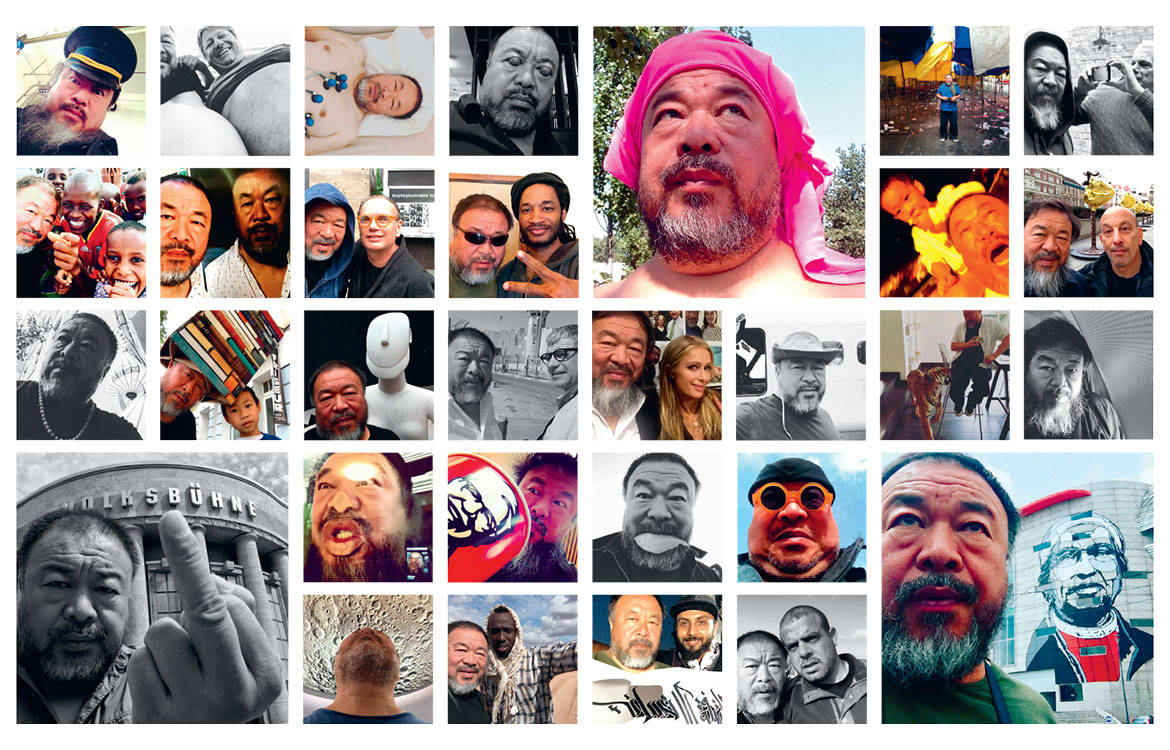
Working with Ai Weiwei was one of the most exhilarating experiences of my life. Partly because we had barely a year to make a major exhibition at the RA, but mainly because he’s a profound, uncompromising and heroic individual whose humanity and humour are never far away.
Outside his studio in Caochangdi – a kind of artists’ village in Beijing – the street is lined with surveillance cameras, each one festooned with a red Chinese lantern by Weiwei, the most gentle of subversions. A bike was chained to the lamppost outside the main door – and it had a fresh bunch of flowers in its basket every day until he got his passport back. For most of the time we were working together, it seemed unlikely he would be able to come to London. I went to Beijing five times over the year and every trip I’d ask whether there was any change in attitude from the Chinese authorities. ‘I always remain optimistic, but every time I think the police might return my passport I am disappointed. Perhaps I am naive,’ he told me.
I remembered his exhibition at the 2013 Venice Biennale, soon after his release from prison, where his mother had come instead. Would she, I wondered, be able to come to London if he were unable to travel. ‘She’s too frail now,’ he said. ‘How about your son?’ I asked. ‘I know he’s only six, but maybe he would like to come.’ ‘My son hates London,’ he told me, rather devastatingly. ‘When I was imprisoned I didn’t want him to know details, so he was told Daddy is in London...’ Read the interview in full here
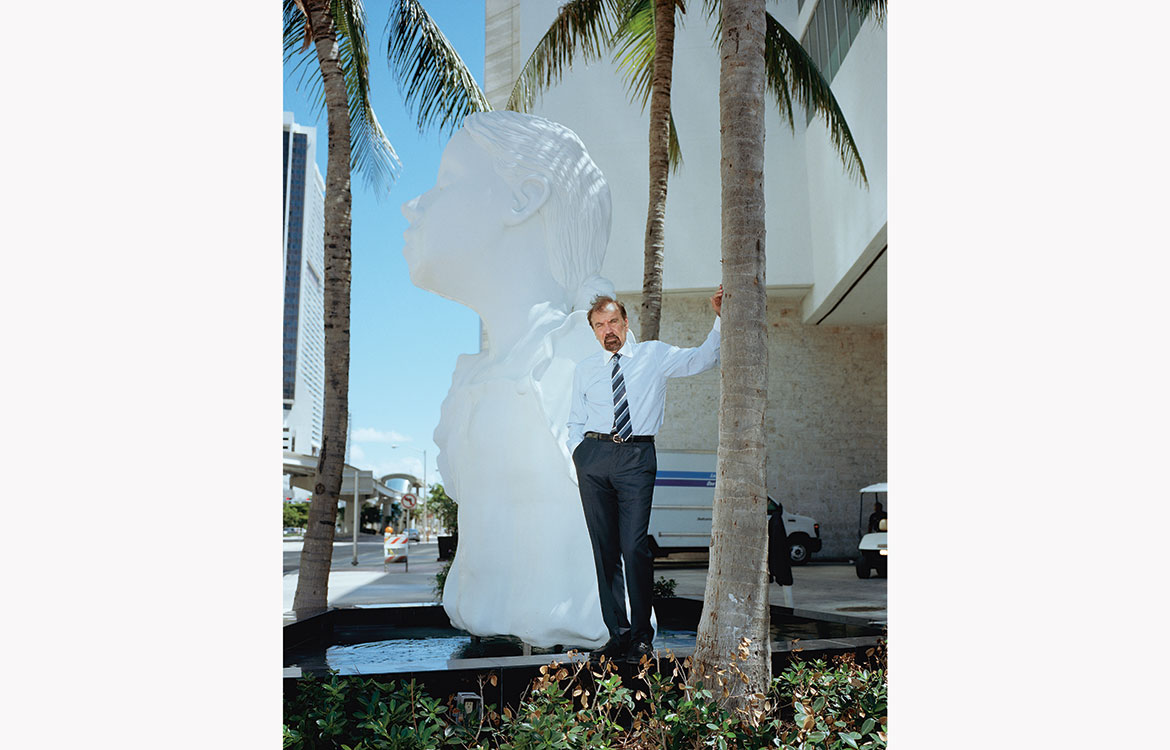
When it comes to supporting the arts, few patrons have made as big a name for themselves as the Miami-based real-estate developer Jorge M Pérez. Founder of the Related Group, part of the property powerhouse behind ambitious urban development projects such as New York’s Hudson Yards, Pérez has not only played a huge part in shaping the modern Miami skyline, but also left his mark on its cultural landscape as well.
In 2013, Pérez’s name became a talking point during the relocation of the Miami Art Museum to a swanky, waterfront home designed by Herzog & de Meuron. Along with its expanded, $220m building, the museum also unveiled a new name: the Pérez Art Museum Miami, an acknowledgement of the $40m donation from the billionaire. Although the naming was unorthodox, PAMM (as it’s affectionately known), has evolved from a municipal-level arts institution to a respected fixture in the international arts scene. Shows have included Ai Weiwei, Julio Le Parc, Jean-Michel Basquiat, the Brazilian artist Beatriz Milhazes and the New York-based Jamaican artist Nari Ward. Works donated by Pérez, largely by Latin American artists, are also on display... Read the interview in full here
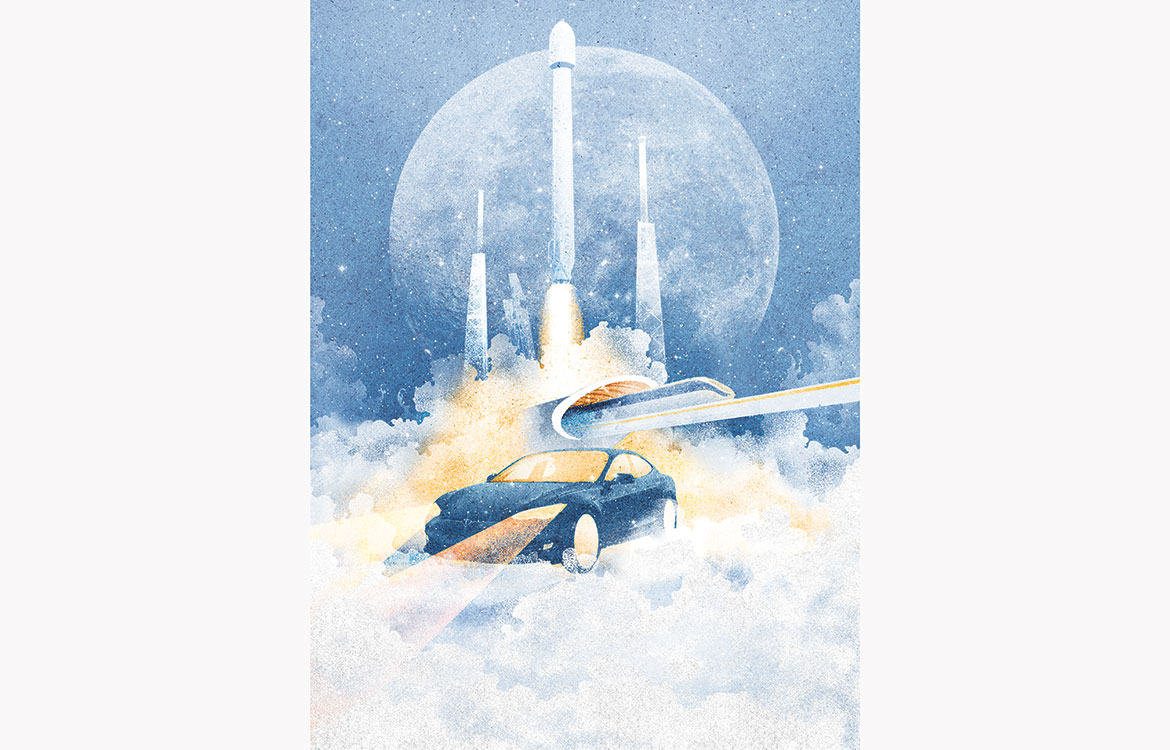
In 1996, Elon Musk – and we realise how quaint this now sounds – did his first million dollar deal. The software company he started in 1995 with $28,000 of his father’s money picked up a $3 million investment and his remarkable career, from software to space via PayPal and sustainable propulsion, was off.
Along the way he has destroyed decades of received wisdom and borrowed business practices and, despite all that, his smartest rivals still think the world of him. As CCO of Aston Martin, Marek Reichman knows a thing or two about building beautiful, cutting-edge cars. It’s thanks to Musk, he says, ‘that our industry is now engaged in a radical rethink of how we create and deliver transportation’... Read the interview in full here
Illustration: Eoin Ryan
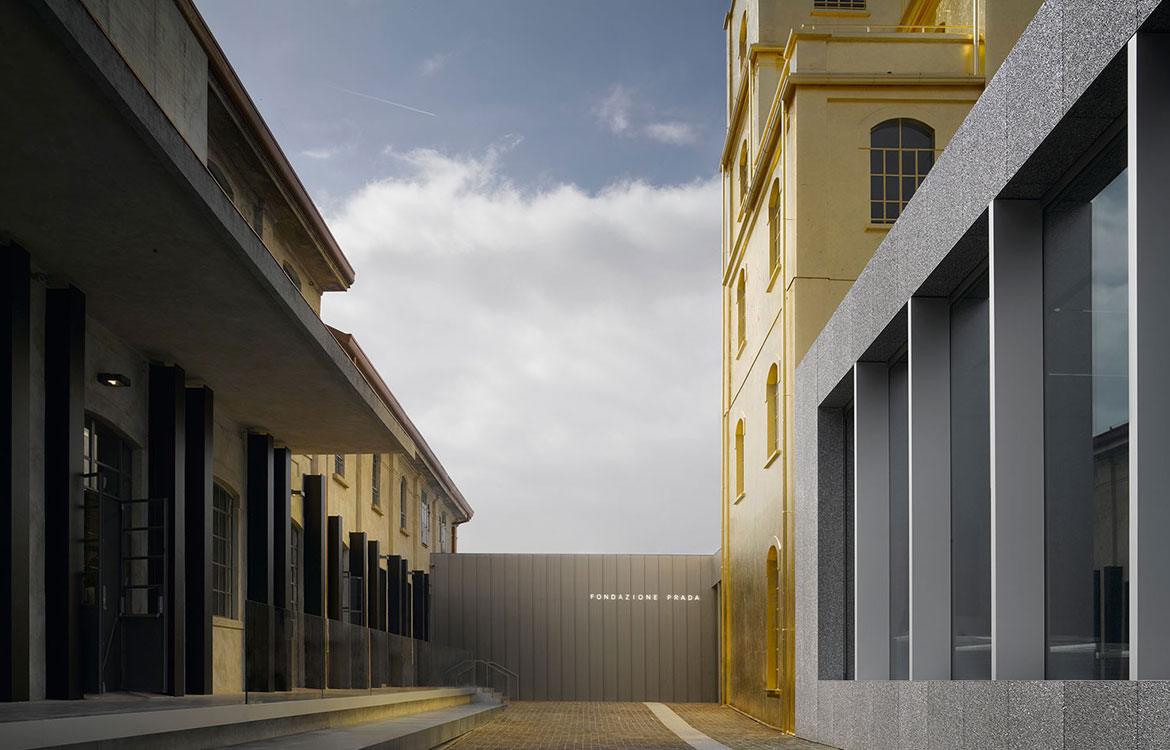
Rare now is the fashion brand that doesn’t do art in some way, does not sponsor, show, collaborate or co-mingle with artists and galleries. It can look like a crushing embrace. But one designer has been doing it for longer and with more sophistication and commitment than any other.
Miuccia Prada, who trained as a mime artist before joining the family operation, established the Fondazione Prada in 1993 and began collecting art; seriously and with serious intent. The Rem Koolhaas-designed New York Prada store, or Epicenter, which opened in 2001, was more gallery and performance space than glittering showcase for product. But Prada has been careful to compartmentalise the fashion brand and the Fondazione. It has its permanent curators, commissions as well as collects, and puts on museum-standard shows.
Last year, the Fondazione Prada campus, also designed by OMA, opened in Milan; twice the size of Renzo Piano’s new Whitney in New York and twice the fun. It has redefined what a private gallery can and should be. It’s an engaging new cultural hub for a city known more for commercial thrust and will be Prada’s real legacy... Read the interview in full here
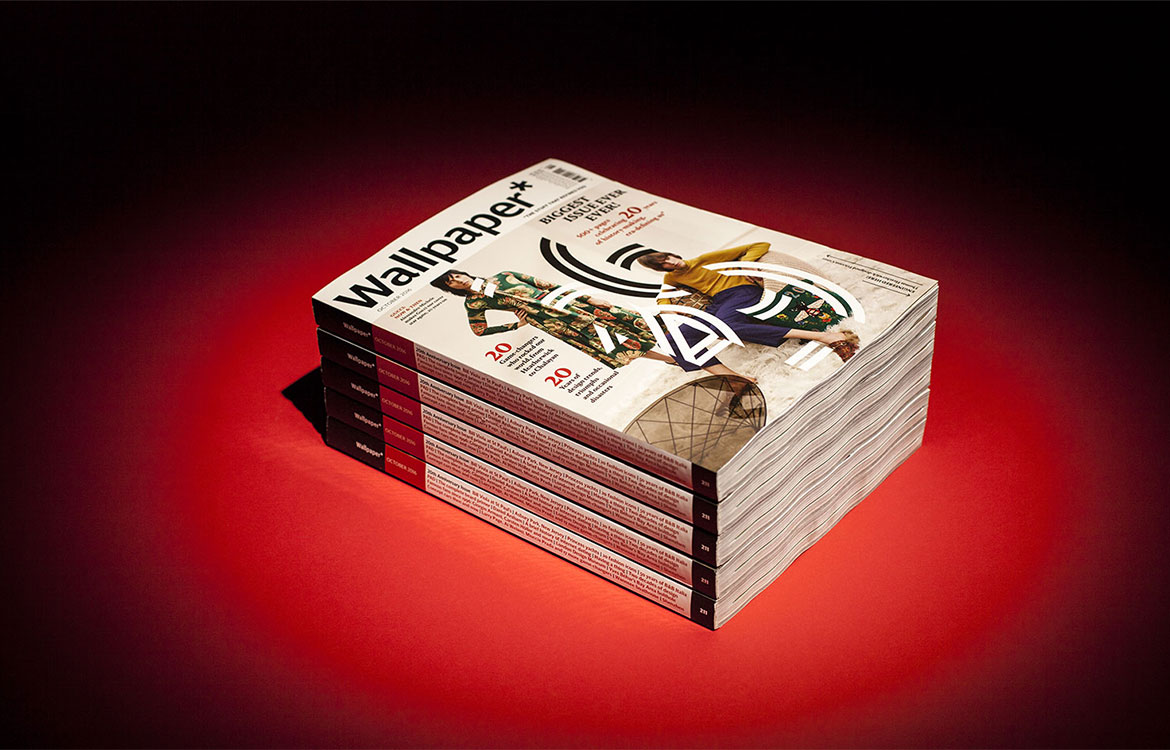
Modesty almost forbids, but only almost. In fact, space doesn’t allow a complete list of our many advances and upshifts, our constant refinements and occasional reinventions over the last 20 years. Here’s just a few to be going on with: establishing the Handmade exhibition as the showcase of contemporary craft and design; creating the perfect pocket-sized travel guide; civilising e-commerce with the W* Store; curating a long-running series of artist-designed covers and back-page artist’s recipes; the encouragement and advancement of wave after wave of young designers and architects; and, of course, smuggling more dubious double entendres onto our covers than any magazine ever.
Rosa Bertoli was born in Udine, Italy, and now lives in London. Since 2014, she has been the Design Editor of Wallpaper*, where she oversees design content for the print and online editions, as well as special editorial projects. Through her role at Wallpaper*, she has written extensively about all areas of design. Rosa has been speaker and moderator for various design talks and conferences including London Craft Week, Maison & Objet, The Italian Cultural Institute (London), Clippings, Zaha Hadid Design, Kartell and Frieze Art Fair. Rosa has been on judging panels for the Chart Architecture Award, the Dutch Design Awards and the DesignGuild Marks. She has written for numerous English and Italian language publications, and worked as a content and communication consultant for fashion and design brands.
-
 Put these emerging artists on your radar
Put these emerging artists on your radarThis crop of six new talents is poised to shake up the art world. Get to know them now
By Tianna Williams
-
 Dining at Pyrá feels like a Mediterranean kiss on both cheeks
Dining at Pyrá feels like a Mediterranean kiss on both cheeksDesigned by House of Dré, this Lonsdale Road addition dishes up an enticing fusion of Greek and Spanish cooking
By Sofia de la Cruz
-
 Creased, crumpled: S/S 2025 menswear is about clothes that have ‘lived a life’
Creased, crumpled: S/S 2025 menswear is about clothes that have ‘lived a life’The S/S 2025 menswear collections see designers embrace the creased and the crumpled, conjuring a mood of laidback languor that ran through the season – captured here by photographer Steve Harnacke and stylist Nicola Neri for Wallpaper*
By Jack Moss
-
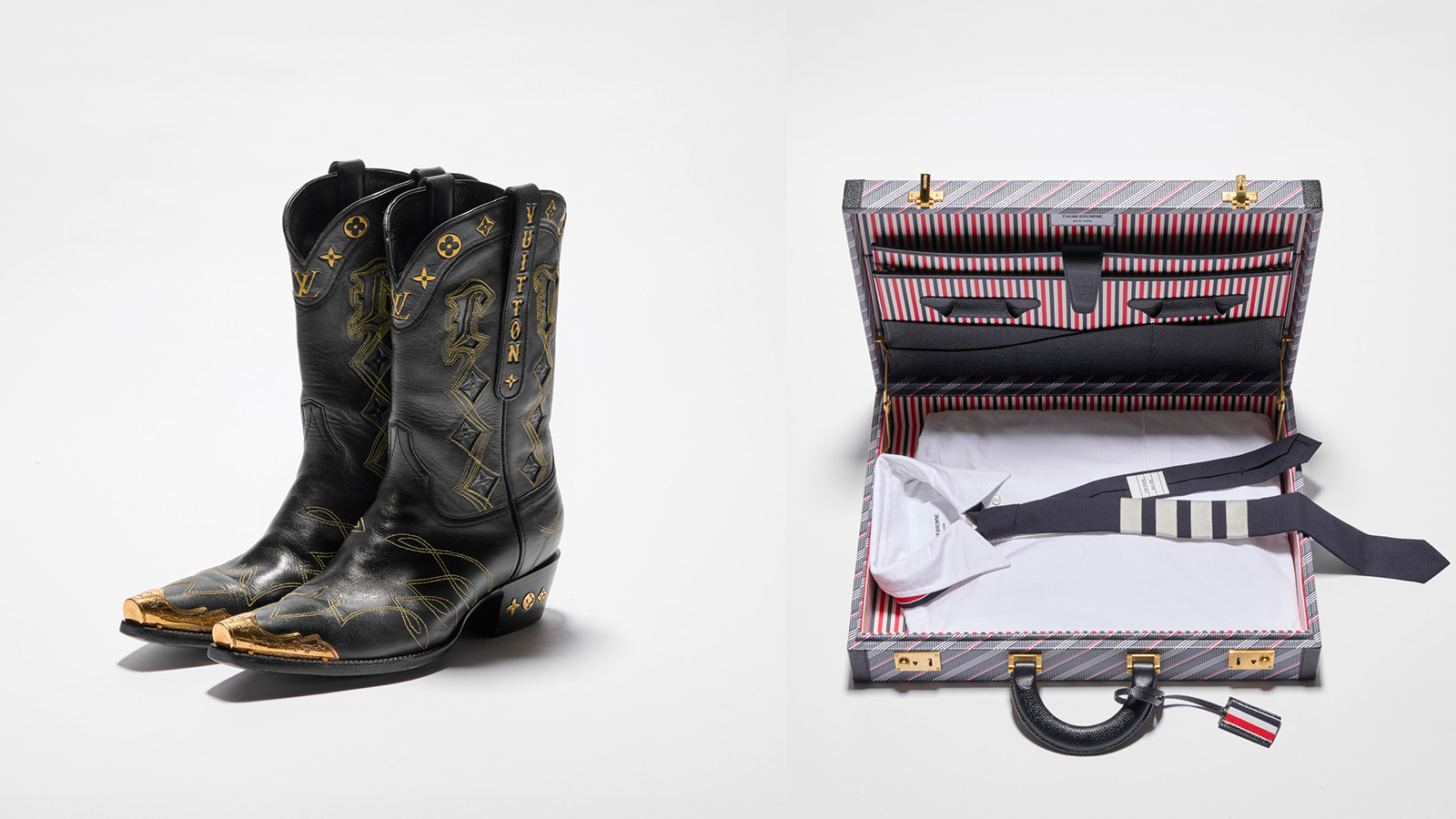 12 American icons of design, from cowboy boots to the MacBook Air
12 American icons of design, from cowboy boots to the MacBook AirOur star-spangled round-up hails American icons of design and their latest iterations, from Pharrell Williams' cowboy boots to the Tiffany Lock, and a tiny yellow cab
By Jack Moss
-
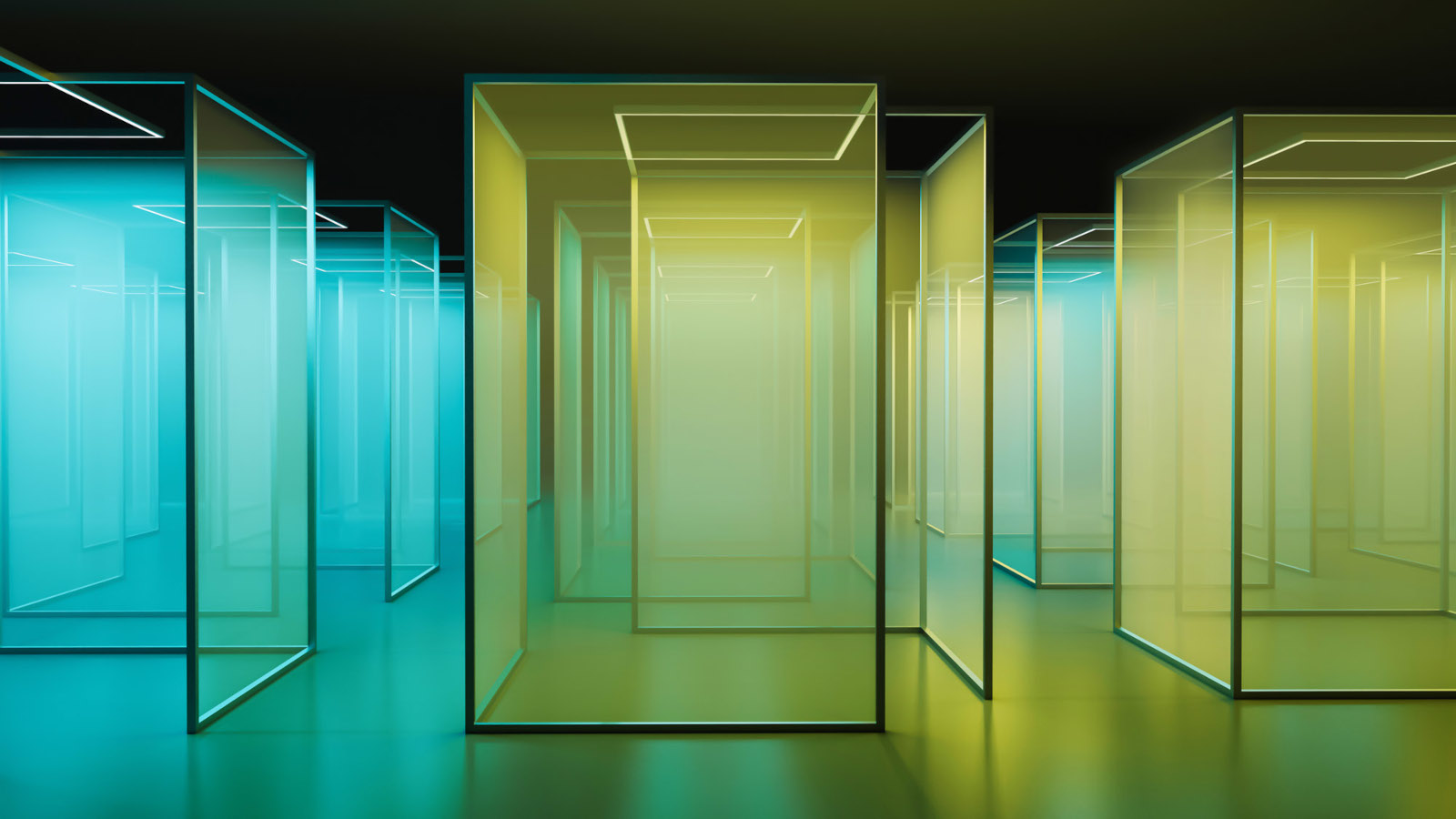 Google and Chromasonic make sense of colour at Milan Design Week
Google and Chromasonic make sense of colour at Milan Design WeekGoogle's interactive installation in collaboration with Chromasonic demonstrates how colour influences our perception of the world
By Adrian Madlener
-
 Divide and conquer: a new exhibition sheds light on the cultural history of folding screens
Divide and conquer: a new exhibition sheds light on the cultural history of folding screens‘Paraventi: Folding Screens from the 17th to 21st Centuries’ is on view at Milan’s Fondazione Prada until 22 February 2024, featuring historical artefacts and new commissions
By Laura May Todd
-
 Google Design Studio celebrates the relationship between water and technology
Google Design Studio celebrates the relationship between water and technologyAt Milan Design Week 2023, ‘Google Shaped By Water’ is an immersive and intimate sensorial installation by Lachlan Turczan that puts water, light and human beings in resonance
By Cristina Kiran Piotti
-
 Ai Weiwei at the Design Museum: a snapshot of design history across eight millennia
Ai Weiwei at the Design Museum: a snapshot of design history across eight millenniaAi Weiwei digs deep into design history, gathering everything from Neolithic tools to Lego bricks for his new show at London’s Design Museum. We visit him at home in Portugal for a preview
By TF Chan
-
 Raf Simons and Kvadrat launch a Shaker-inspired accessories collection
Raf Simons and Kvadrat launch a Shaker-inspired accessories collectionLaunching on 10 August 2022, the new accessories collection by Raf Simons for Kvadrat includes cushions, throws, bags, as well as tray, box, magazine holder, cap, and two key chains whose design is driven by functionality
By TF Chan
-
 Jony Ive remembers Steve Jobs ten years on
Jony Ive remembers Steve Jobs ten years onIn a published remembrance in WSJ Magazine – marking ten years since the death of Steve Jobs – Jony Ive, former chief design officer of Apple, reflects on his friendship and collaboration with Jobs, and how it inspired his LoveFrom creative collective
By Sarah Douglas
-
 Google gets physical with first New York store
Google gets physical with first New York storeGoogle opens its first retail location in Manhattan's Chelsea neighbourhood. We spoke to Ivy Ross, the company’s vice president of hardware design, UX and research, who served as creative director of the store, to find out more about Google's move into physical retail
By Pei-Ru Keh